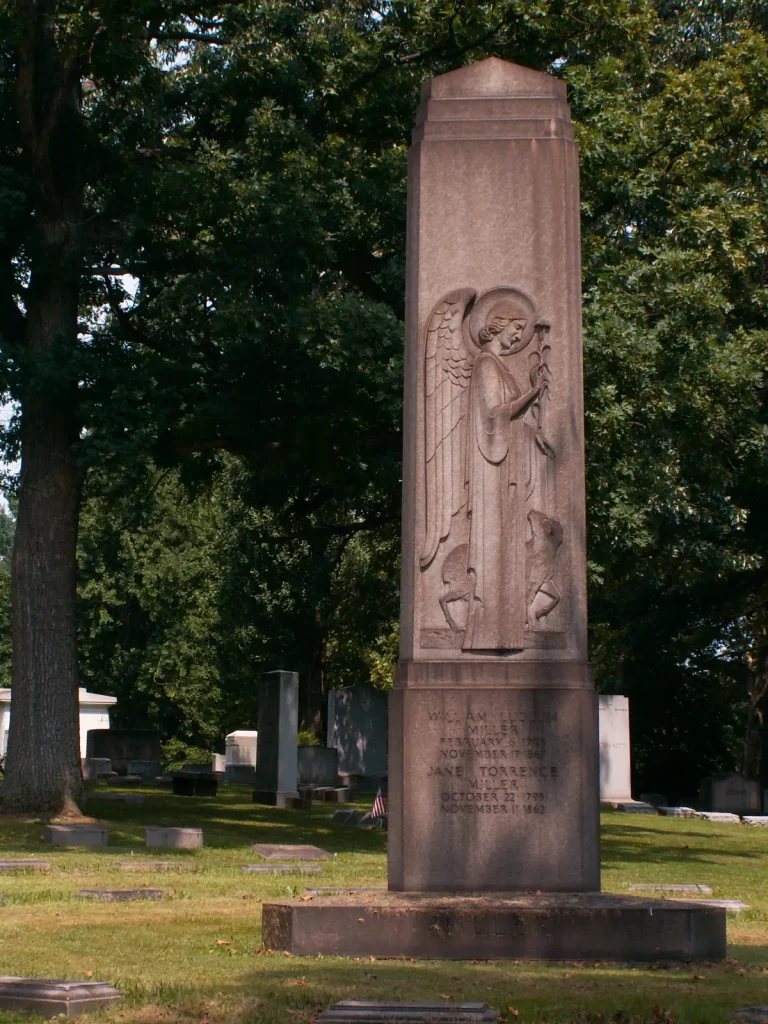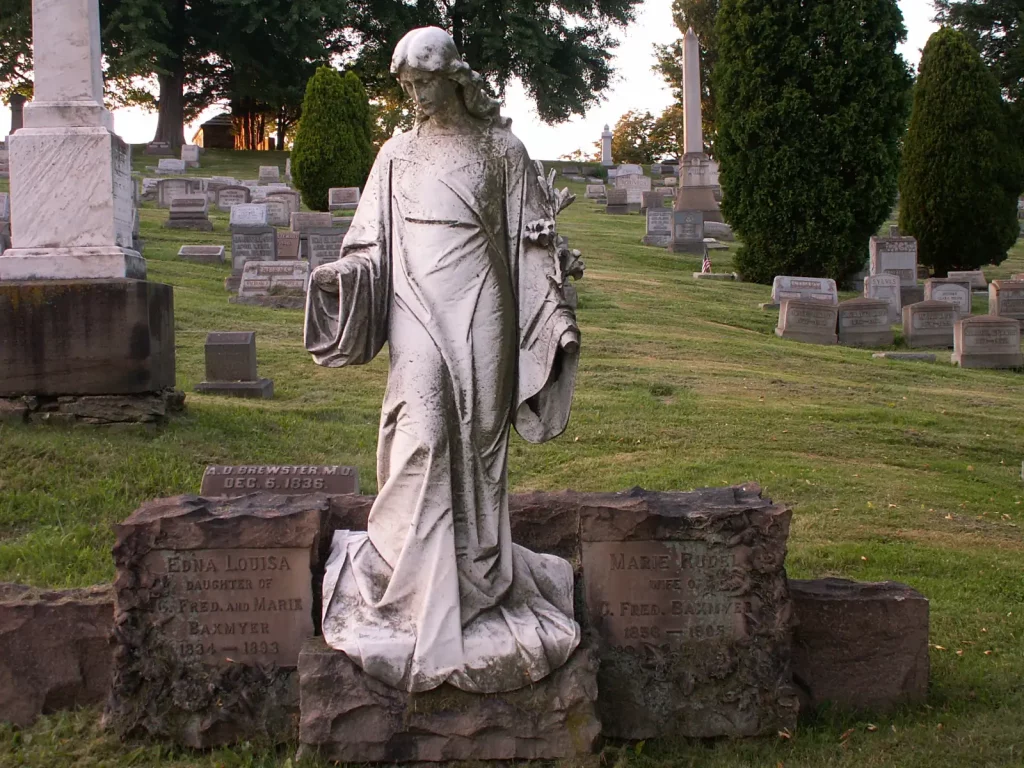
A splendid Doric temple built in 1901 for a patent-medicine king. We tend to forget that, though steel made Pittsburgh’s reputation, throughout the nineteenth century the city was also a very important center of the patent-medicine business. Perhaps we’d rather forget it, but old Pa Pitt is here to remind us of the fact every once in a while.








